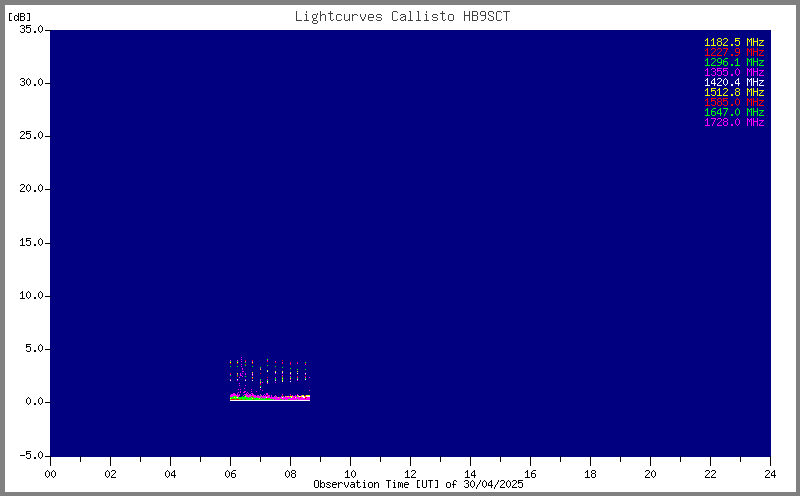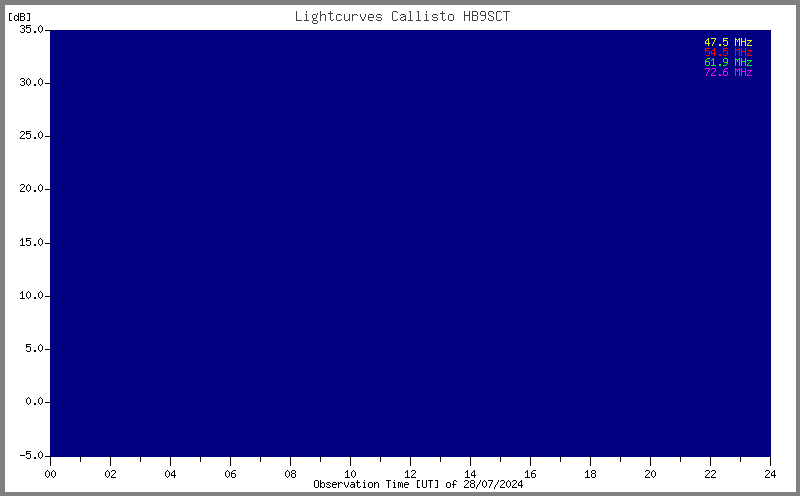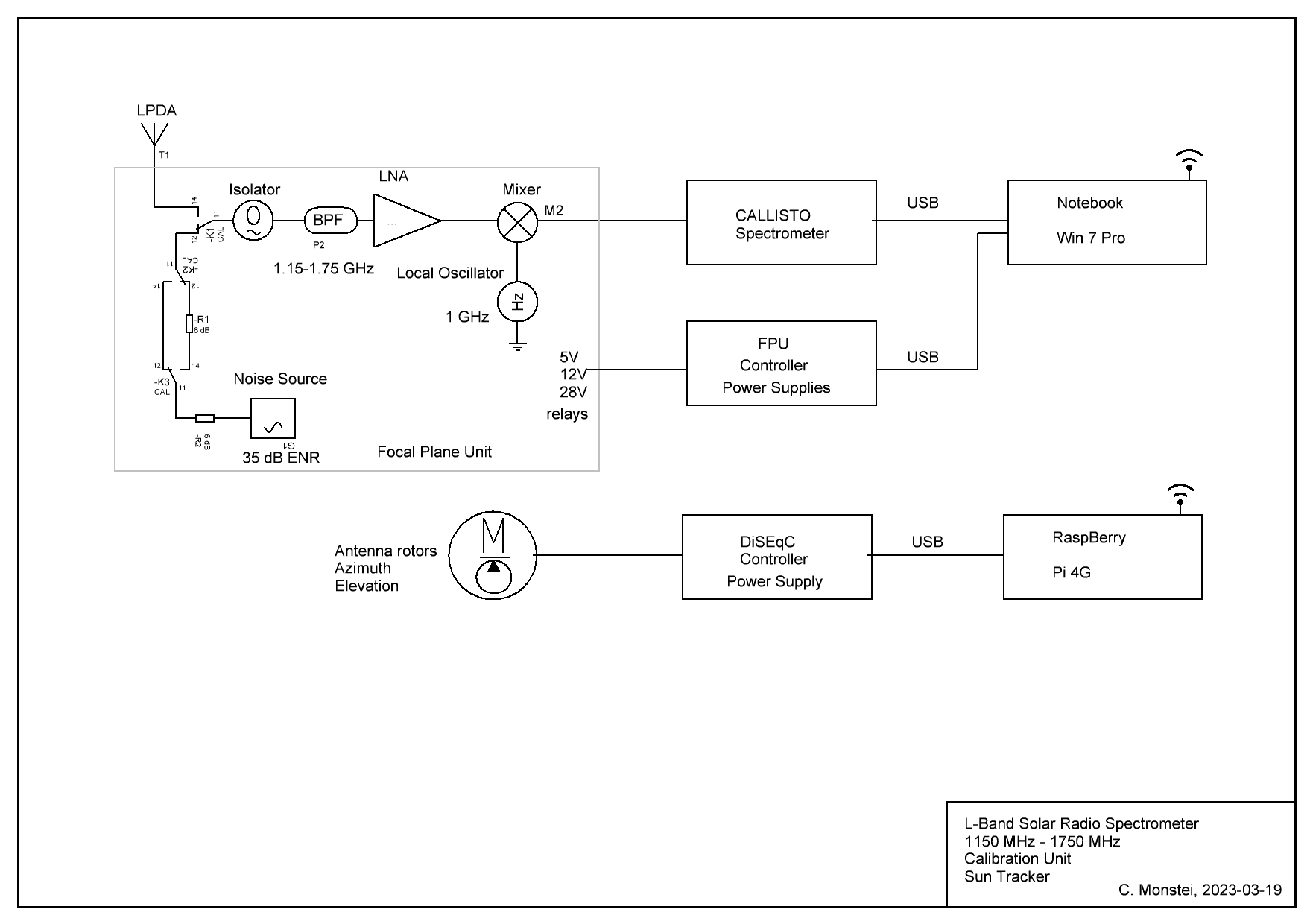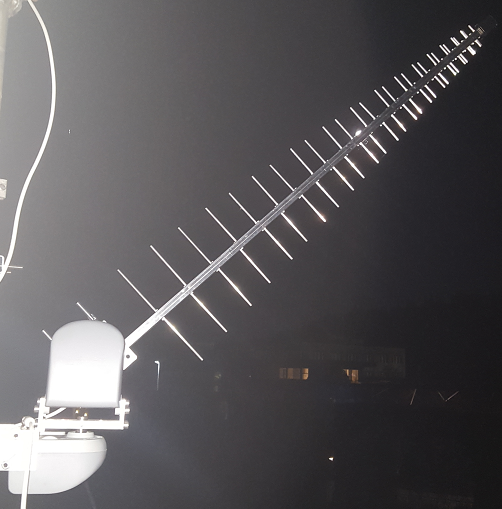Dynamic solar radio noise is measured daily with low cost instrumentation (CALLISTO).
Data are stored locally on a harddisc of a standard Windows notebook.
Every 15 minutes a FIT-file is uploaded to the central data-server at FHNW in Brugg/Windisch.
Antenna (LPDA) is automatically tracking the sun via a DiSEqC controller and two satellite rotors.
Tracking data and rotor commands are generated by a RaspBerry Pi 4.
Both CALLISTO and RaspBerry Pi 4 are connected via WiFi to the internal network.
| Actual measurements | |
|---|---|
 Frequency agile solar radio spectrometer CALLISTO-01. Frequency range 1150 MHz - 1750 MHz. Antenna LPDA from Wittenberg company, Germany. Sun tracker based on two satellite rotos (DiSEqC). |
 Frequency agile solar radio spectrometer CALLISTO-02. Frequency range 10 MHz - 80 MHz. Antenna BICONE from Schwarzbeck company, Germany. Weather station WH65LP |
| Equipment: | |
|---|---|
 |
Schematics of L-band solar radio spectrometer CALLISTO including sun-tracker and calibration unit. |
 |
Night view of antenna tracker (azimuth + elevation) and LPDA. |